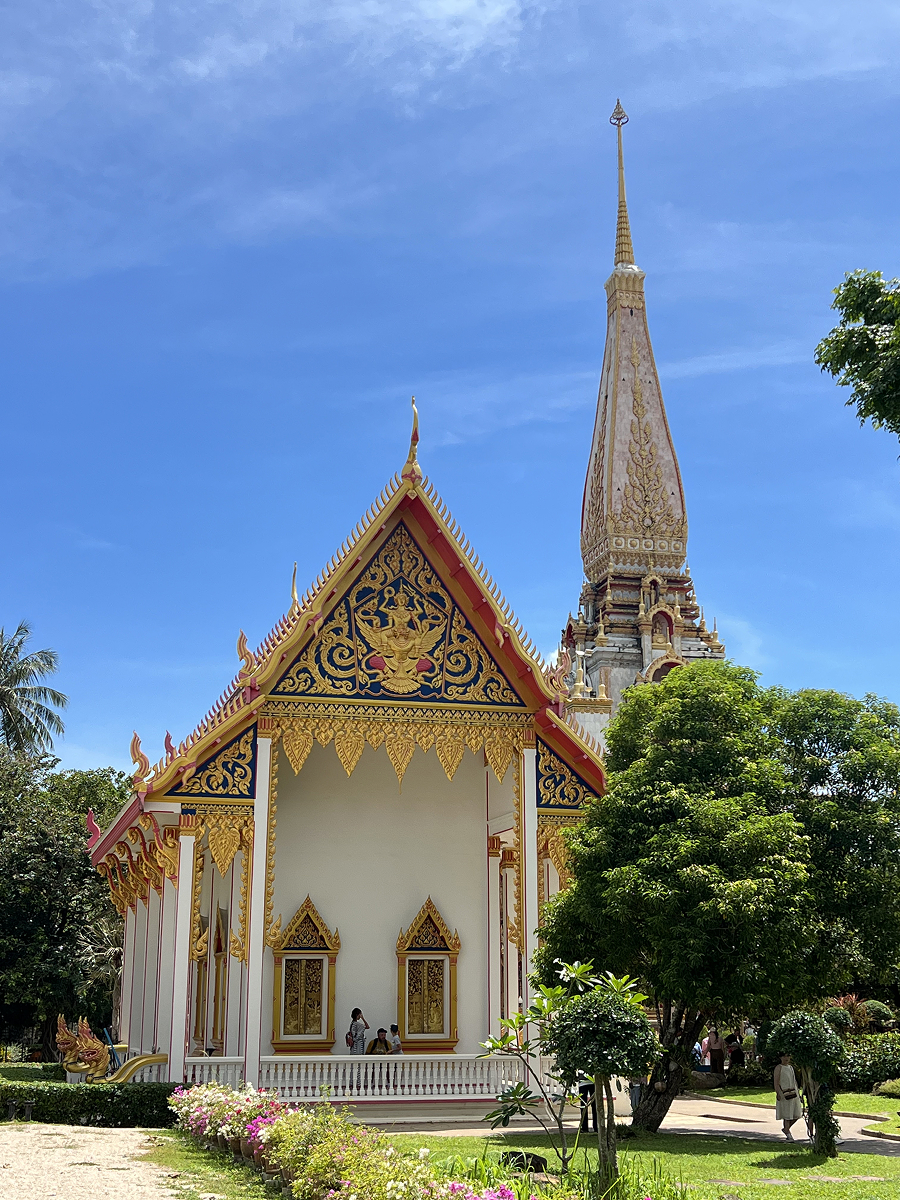This Thailand travel guide begins with a confession: Thailand wasn’t always high on my list. Too touristy, I assumed — until I spent two months between Krabi, Bangkok, and Chiang Mai and realized it truly lives up to the hype.
Like many long-term travelers, I had quietly written Thailand off as a bit too easy — the kind of place everyone goes. But once I arrived, I saw the other side: the silent temples at sunrise, the understated elegance of old wooden houses in Chiang Mai, and the surprise of a perfect, modern Airbnb with all the comforts — rooftop pool, gym, and a beach just a short walk away. It’s a country that rewards curiosity — especially if you step just slightly off the beaten path.
There’s something magnetic about the contrast here. Bangkok is skyscrapers and street food, rituals and rooftop bars. Krabi is humid and jungle-framed, with beaches that still feel personal if you know where to look. Chiang Mai has a rhythm all its own — gentle, golden, deeply rooted.
If you’re planning your first trip to Southeast Asia, Thailand is one of the most accessible and rewarding destinations. Thailand is one of the most visited countries in Southeast Asia — and for good reason. This Thailand travel guide offers a curated, firsthand look at what to expect — from temples and rooftops to street food and sunsets.
Quick Facts
- Currency: Thai Baht (THB)
- Language: Thai (English is common in tourist areas)
- Power Outlets: Type A, B, C; standard voltage 220V
- Visa Requirements: Most visitors get a 30-day visa exemption. Check the official Thai eVisa site for details.
Best Time to Visit Thailand
Thailand’s seasons define its landscapes and experiences:
- Cool/Dry (November to February): The most popular months, with warm days and clear skies — perfect for boat rides and evenings by the beach. I arrived in October, and the sunsets delivered.
- Hot (March to May): Temperatures soar, but the crowds thin.
- Wet (June to October): Short, heavy rain showers give way to lush landscapes and fewer tourists.
Where to Go
Thailand’s diversity makes it ideal for slow travel. Here’s where to start:
Bangkok
A city of contrasts — bustling markets and serene temples meet high-rise dining. This is often the first stop for international travelers, and it’s easy to see why. Bangkok offers a vibrant mix of tradition and modernity, where golden temples sit beside rooftop cocktail bars. Spend a morning exploring the Grand Palace, wander through local markets, and wrap up the day with sunset drinks at a rooftop bar. It’s chaotic, colorful, and never boring.
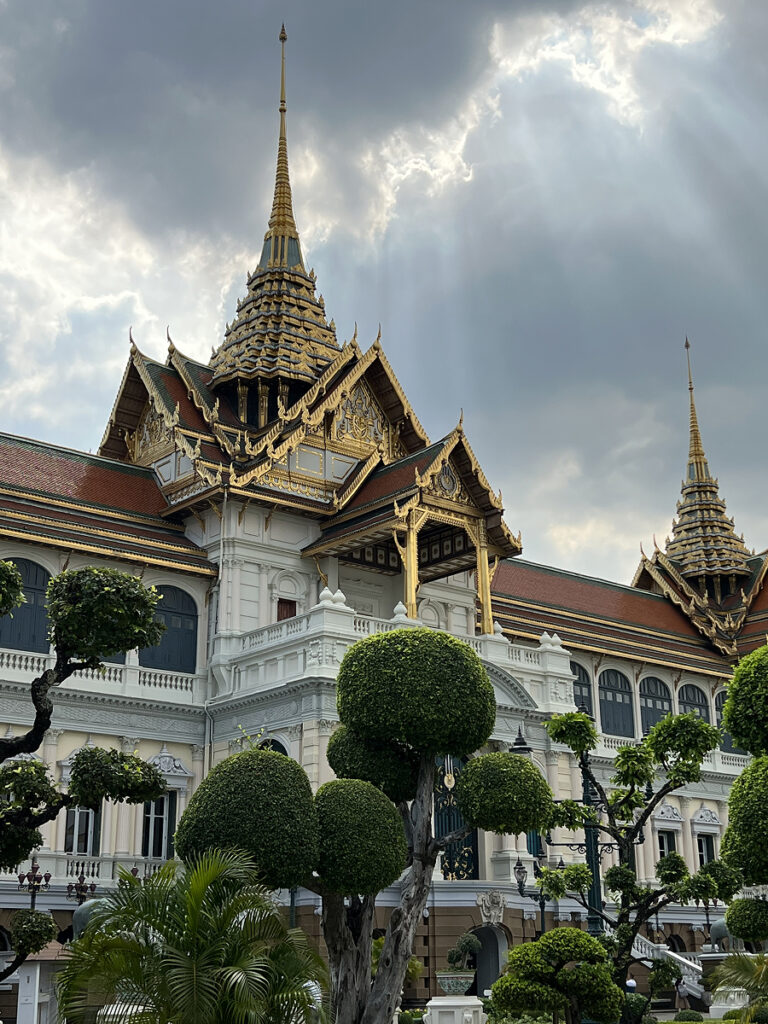
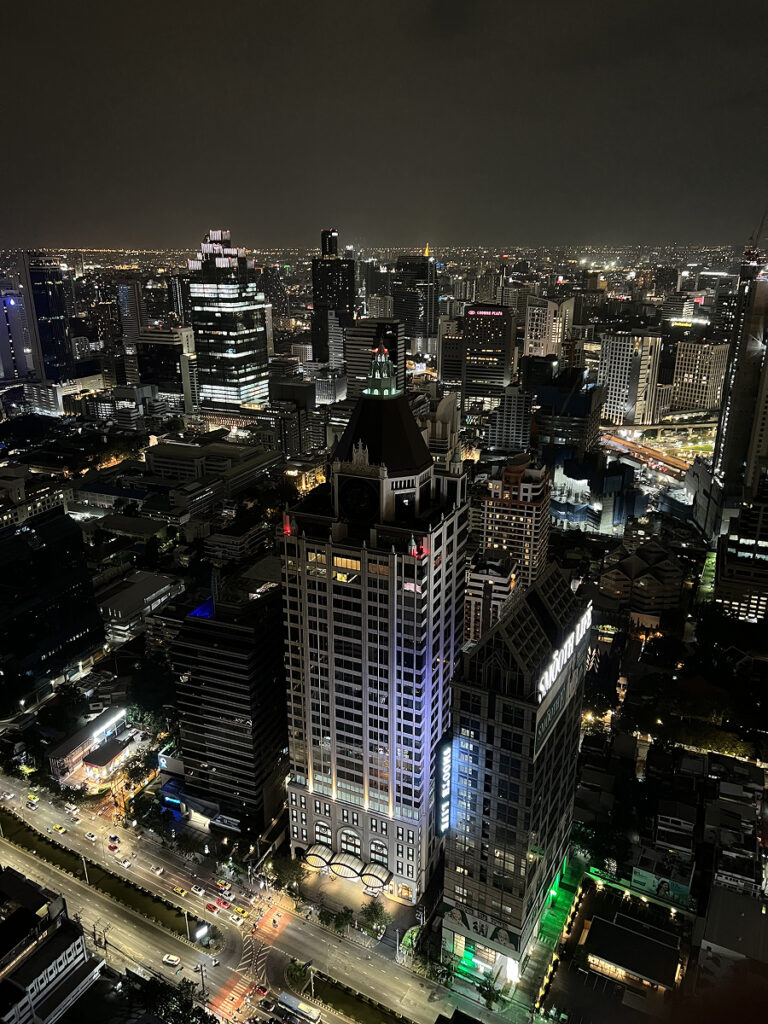
Chiang Mai
Green and gentle, Chiang Mai feels like the opposite of Bangkok — slower, softer, wrapped in mountain air. It’s where I found myself slipping into a more mindful rhythm: mornings in Chiang Mai’s many beautiful, design-forward cafes, afternoons spent visiting temples or wandering backstreets, and nights strolling through the Sunday walking market, snack in hand.
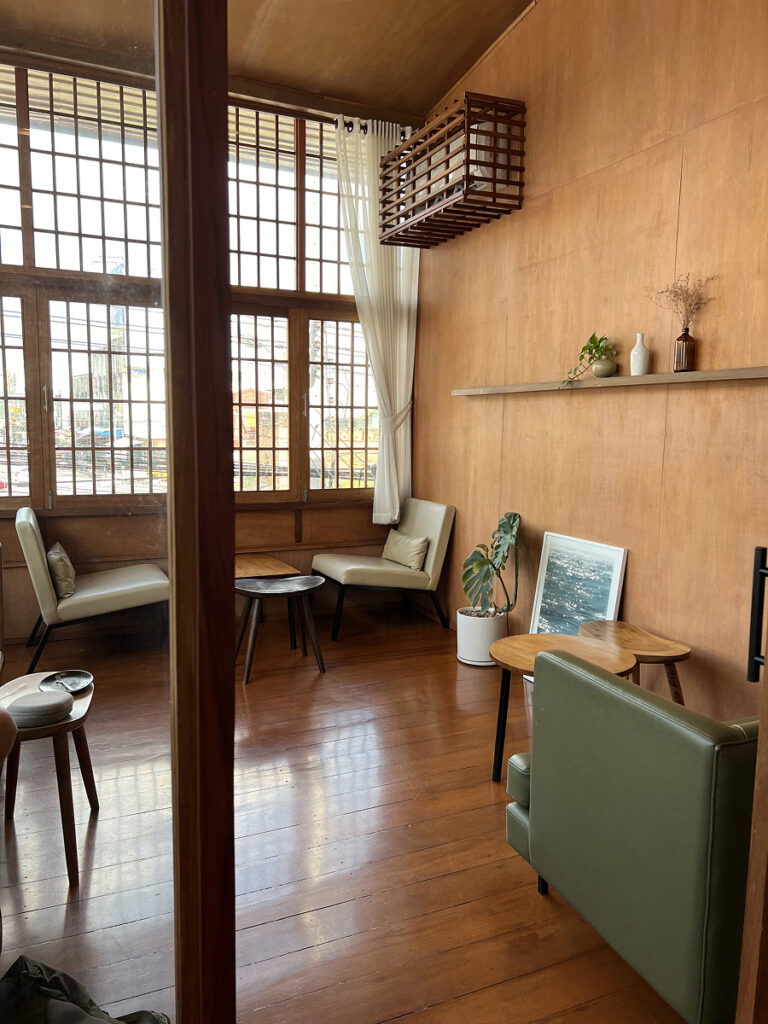
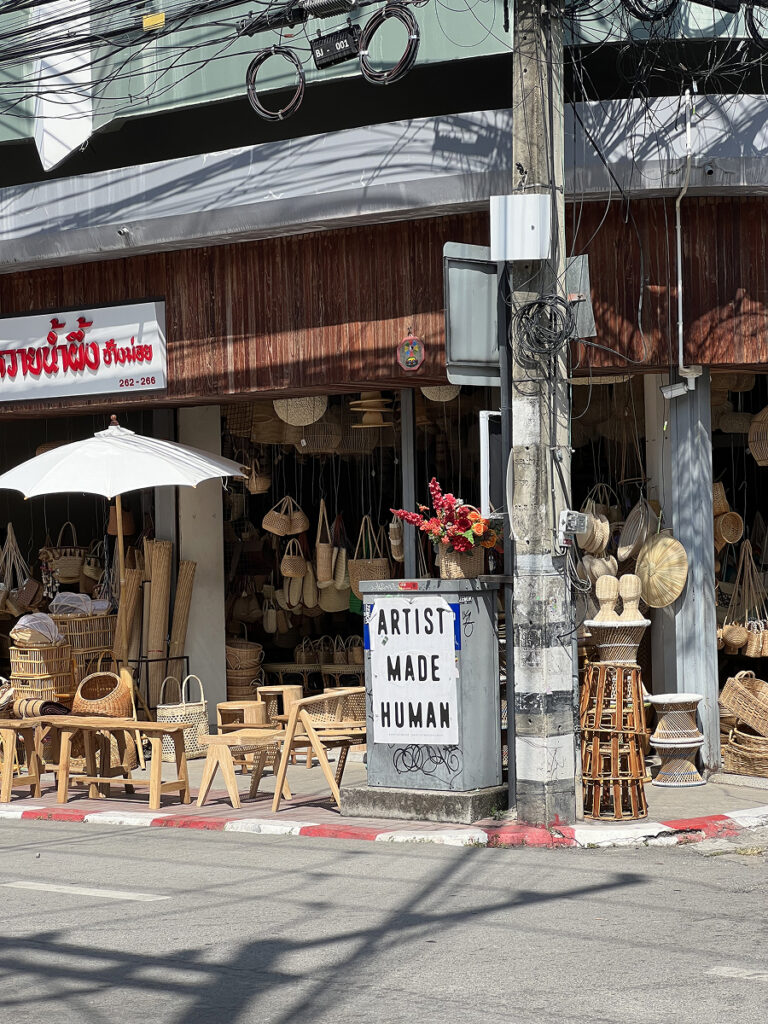
Chiang Rai
We visited Chiang Rai as a day trip from Chiang Mai, drawn by the surreal beauty of the White Temple. The town itself felt slower, more subdued — a quiet place to have lunch and wander without a plan. I can’t speak to its full personality after just a few hours, but even that glimpse hinted at a softer pace and a sense of space.

Krabi
Krabi was my first stop in Thailand, and the heat and humidity hit me like a brick wall the moment I stepped outside the airport — like being wrapped in a hot, damp blanket. We based ourselves in Klong Muang Beach, where the pace was slower and the beaches mostly empty — a far cry from the chaos of Ao Nang. From here, it’s easy to explore islands, hike limestone peaks, or just float through the heat.
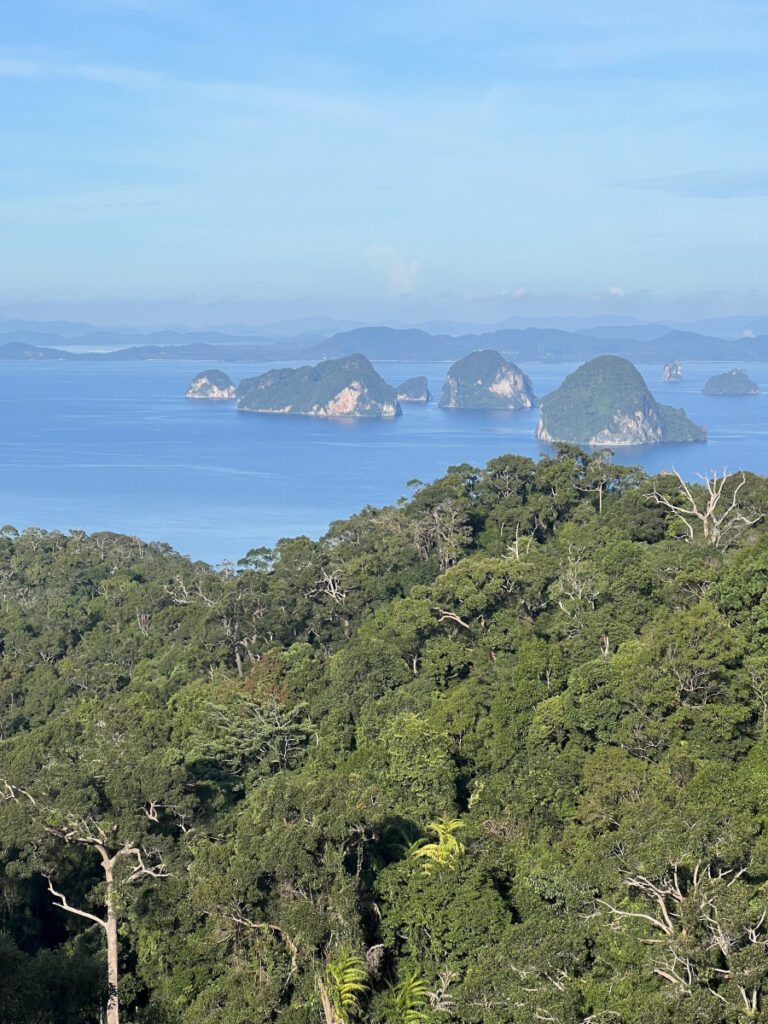
Phuket
We visited Phuket as a weekend getaway from Krabi, and arriving in Patong after the quiet of Klong Muang was a bit of a shock — neon lights, crowds, and a party energy that never really lets up. But we were based in Phuket City, which offered a very different experience: colorful streets, local cafes, and a slower, more lived-in vibe. Phuket has range, and with the right base, it can feel unexpectedly refined.
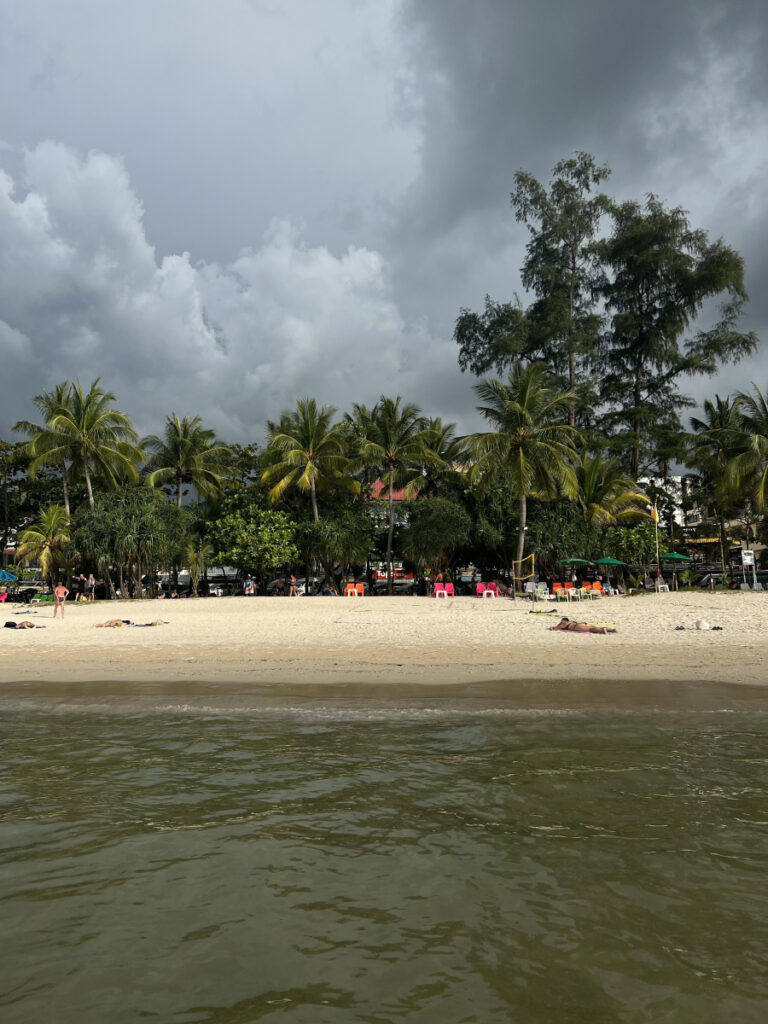
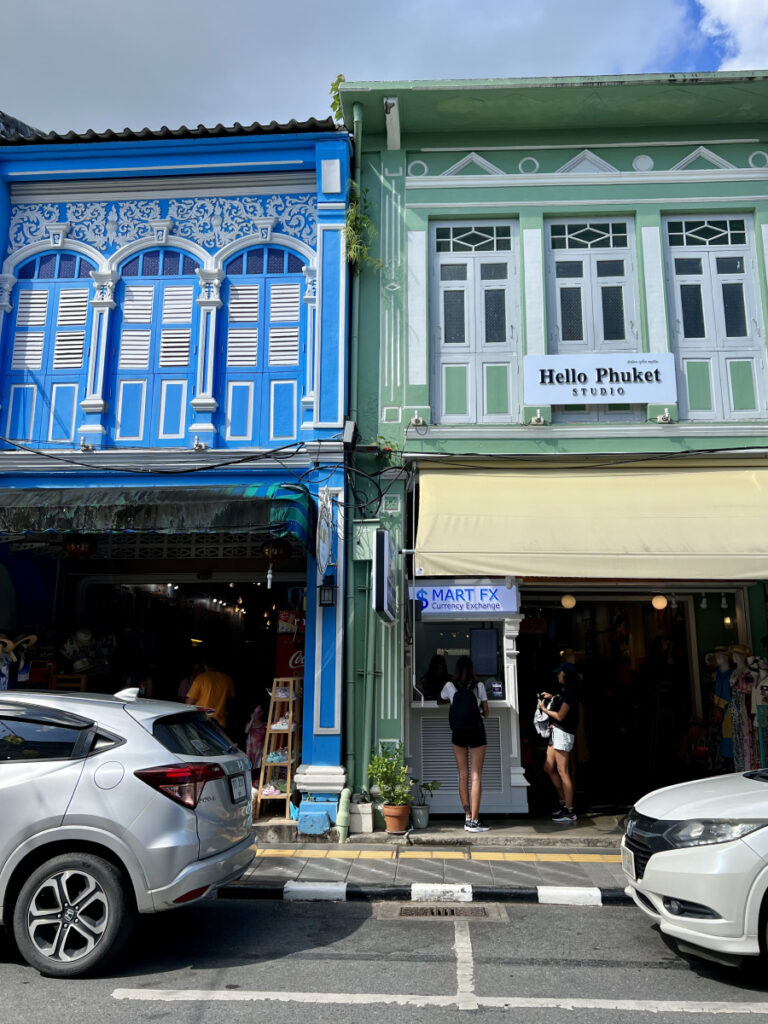
The Islands
We did a couple of island day trips from Krabi, and honestly — that was enough for us. The scenery was beautiful, no doubt, but the crowds were intense. Phi Phi in particular was one of the most overrun tourist experiences I’ve ever had — it looked like a postcard but felt like chaos.
There are plenty of other islands, each with its own vibe, but I can’t speak to them firsthand. If you’re craving solitude or a slower pace, choose carefully — Phi Phi might not be the best fit.
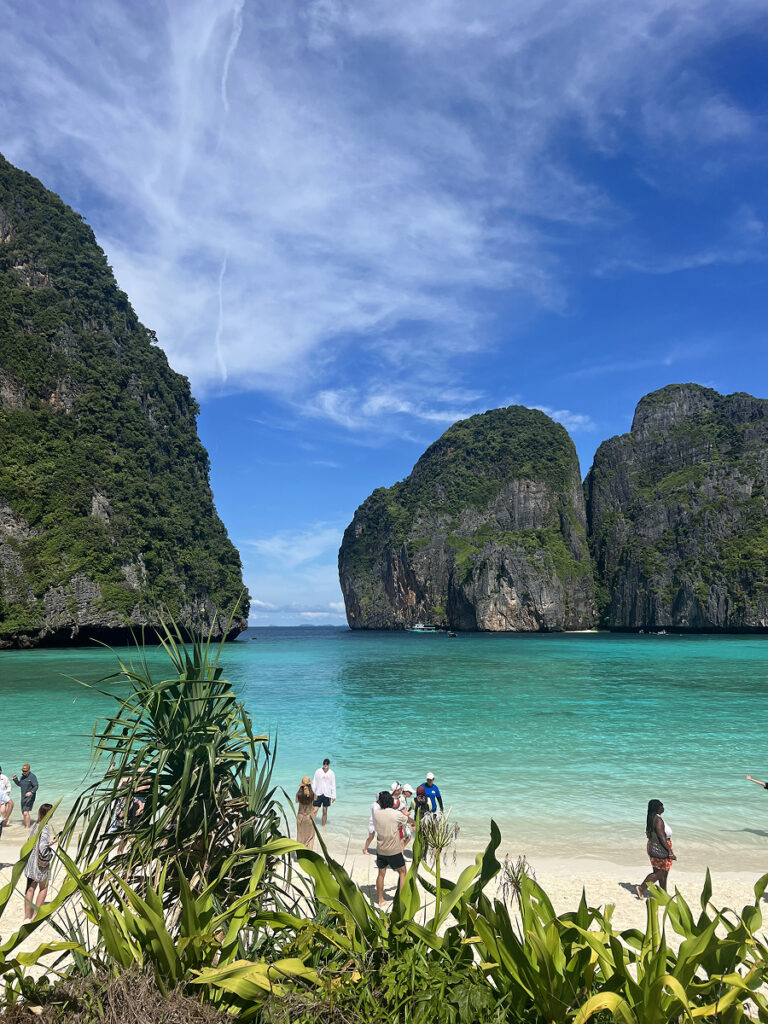
Pai
I didn’t make it to Pai on this trip, but it’s high on my list for next time. Tucked into the mountains a few hours from Chiang Mai, Pai is known for hot springs, motorbike loops, and a relaxed, creative atmosphere. It’s said to be one of Thailand’s most peaceful corners — and I’m curious to see for myself.
Top Things to Do in Thailand
This Thailand travel guide skips the usual bucket-list stops in favor of deeper, more memorable experiences — the kind you won’t always find in a guidebook. These are a few of my favorite, uniquely Thai moments from my two months in the country:
Hike to Khao Ngon Nak for a Jungle Sunrise
Khao Ngon Nak in Krabi is the kind of trail that makes you earn your views — steep, sweaty, and stunning. The sunrise payoff? Completely worth the 4am wake-up.
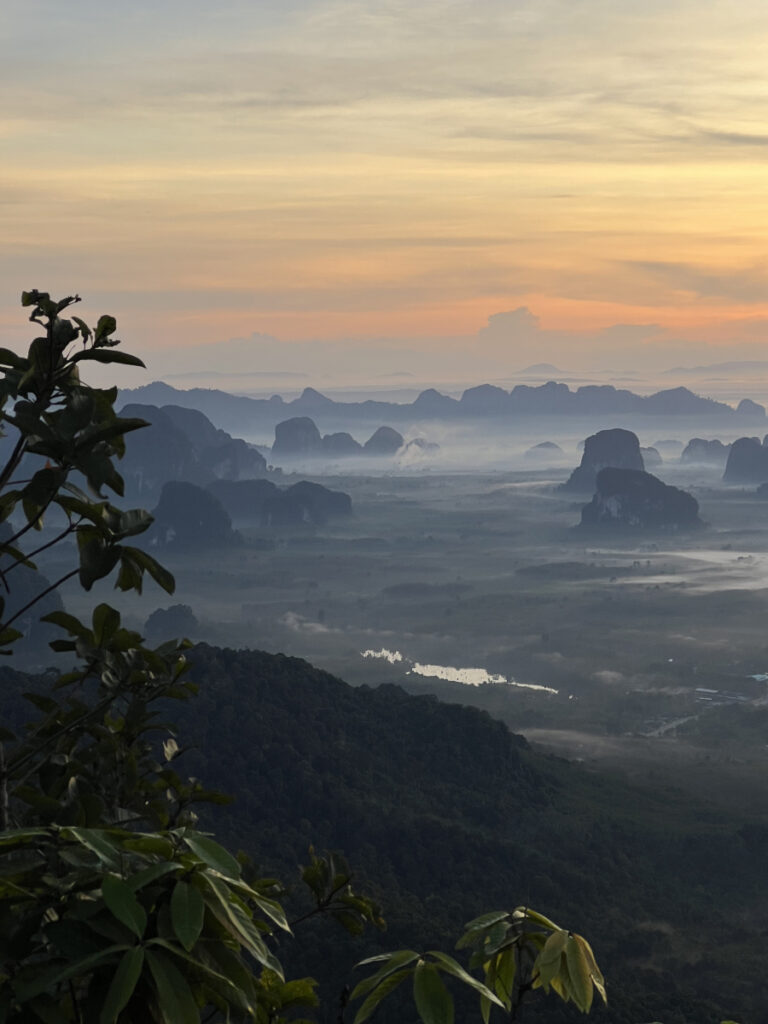
Live the Beach Bum Life (On Your Own Terms)
Our stay in a quiet condo near Klong Muang Beach gave us the space to actually be in Thailand — slow mornings, sunset swims, and grilled fish at our local spot. A reminder that not every beach experience needs a tour group or TikTok reel.
Sip Rooftop Cocktails in Bangkok
There’s something surreal about the calm that descends once you’re 60 floors up. We splurged on rooftop drinks more than once — and yes, I did eat my weight at the COCOA XO – Chocolate & Cognac Bar, which includes an all-you-can-eat chocolate buffet with cocktails.
Visit a Floating Market
Damnoen Saduak might be chaotic, but there’s something wildly charming about buying snacks from a canoe. Go early, and treat it like the spectacle it is — even with a tour, it’s worth seeing.
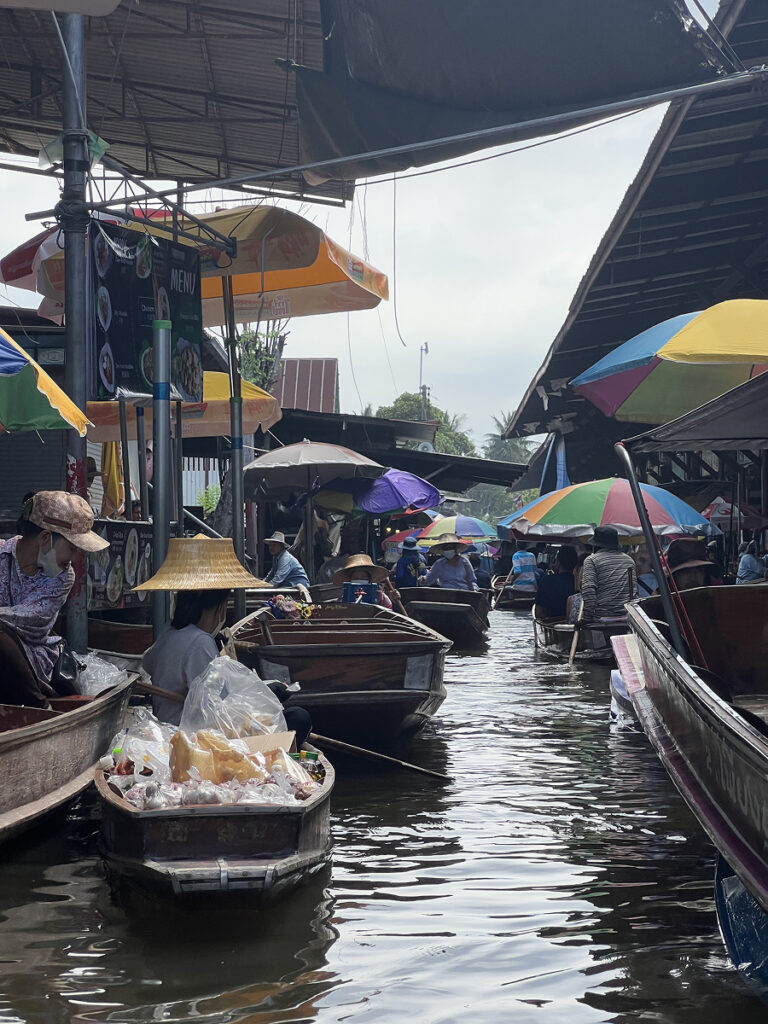
Stay in a Luxe Airbnb for Less
Rooftop infinity pools, air-conditioned gyms, modern interiors — for under $50 a night? Thailand’s Airbnb game was unexpectedly strong. Sometimes, it was just as enjoyable to stay in and enjoy “living” there.
Try everything at 7/11
From dumplings and cakes to grilled cheese sandwiches that somehow hit the spot at 2am — 7/11 was its own food tour.
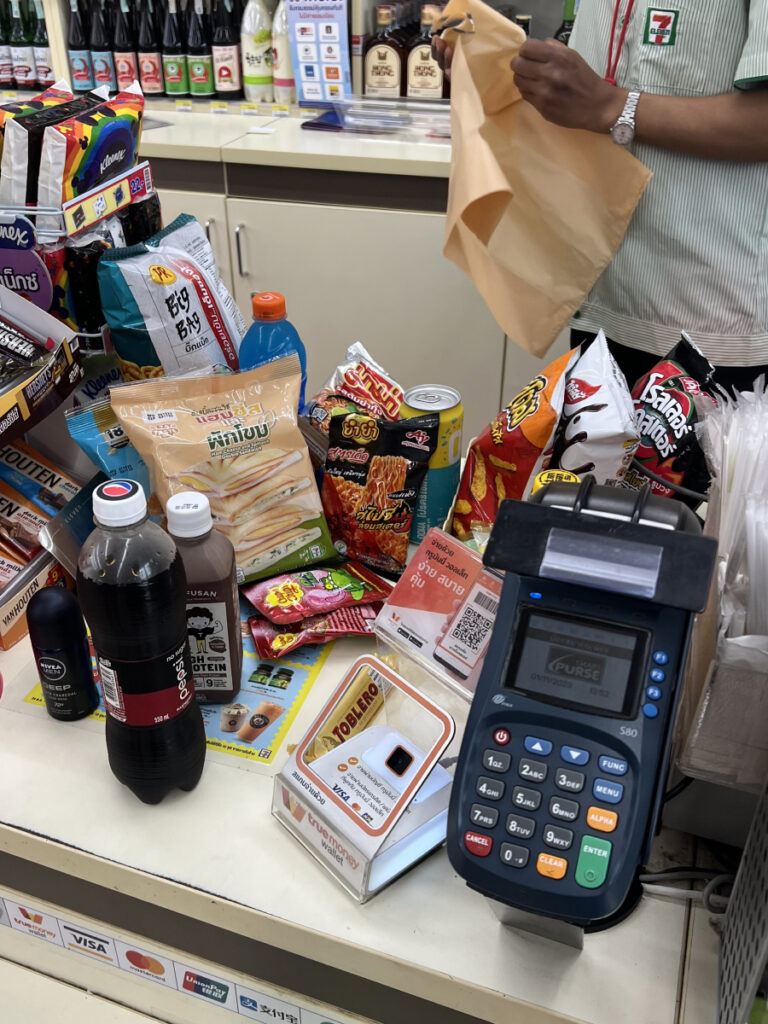
What to Eat in Thailand
Thai cuisine is legendary for a reason. Street food often outshines sit-down restaurants. My personal obsessions? Papaya salad, skewered meats, and sticky rice with mango — the perfect trio for tropical evenings. While Thailand is famous for its street food, I’ll admit I was a little cautious around market stalls — I didn’t want to risk getting sick mid-trip. But even with a conservative approach, I ate very well. You don’t have to be adventurous to eat memorably here.
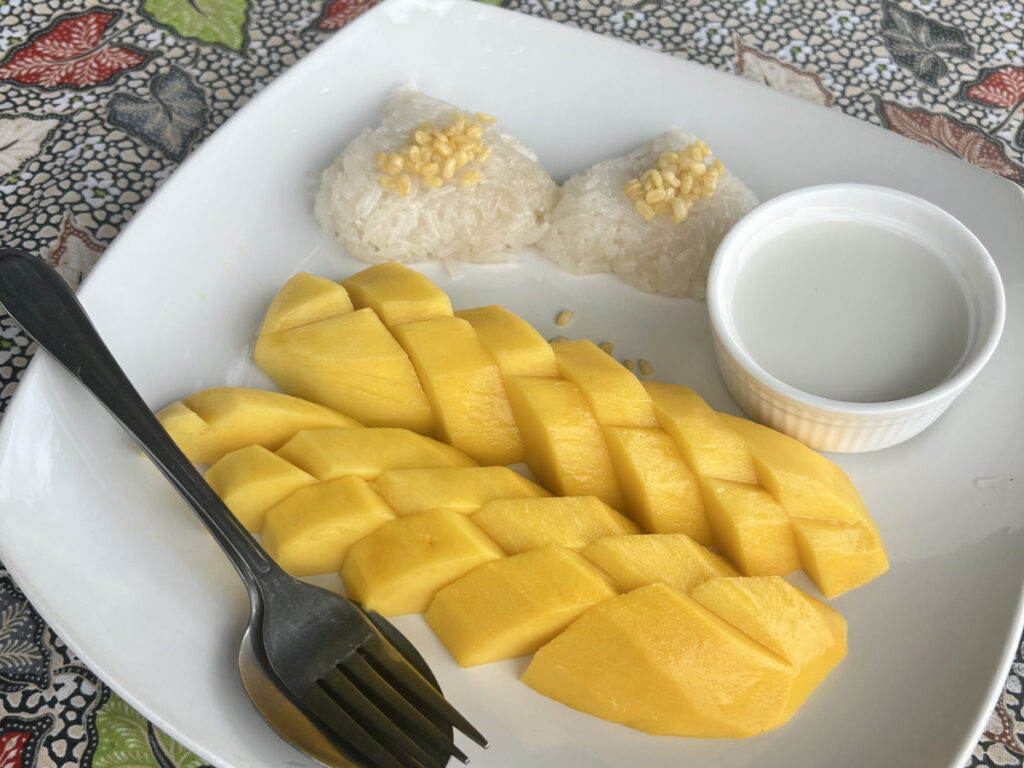
Budget & Money Tips
Thailand offers exceptional value across all price points — whether you’re traveling on a shoestring or splurging on boutique stays and fine dining.
From $1 street food to luxury resorts with private pools, you’ll find options that suit every style. During our time in Thailand, we assumed we’d save money… but the irony is, the cheaper things are, the easier it is to say yes to everything — one more drink, one more massage, one more island hop.Cash is preferred in many places, especially at markets, small restaurants, and transportation hubs. ATMs are widely available (though they usually charge a withdrawal fee), so it’s worth taking out larger amounts at once.
Transport & Getting Around
- Flights: Affordable and fast between major cities — we flew between Bangkok, Chiang Mai, and the south.
- Minibuses: Reliable for medium-distance trips like Krabi to Phuket.
- Private drivers: We hired a taxi for the day during our Chiang Rai trip — easy and comfortable.
- TukTuks: Ubiquitous and fun, especially in Bangkok. Just agree on a price beforehand.
- Scooters: Ideal for islands, but only if you’re confident riding.
- Apps: Grab is your go-to for rides and food delivery.
Safety & Etiquette
Thailand is generally safe, but tourist scams exist. Dress modestly at temples — shoulders and knees covered — and always remove shoes before entering. A friendly smile is part of the culture.
Packing List / Travel Essentials
Pack light, breathable clothing for heat and humidity, plus a scarf or long pants for temple visits. A rain jacket is useful during the monsoon.

Thailand FAQs: Practical Q&A
Is Thailand safe for solo travelers?
Yes. Thailand is considered one of the safest countries for solo travelers in Southeast Asia. Exercise the usual caution in tourist-heavy areas.
Can I drink tap water in Thailand?
No. Bottled water is widely available and recommended.
What’s the best way to get around Thailand?
For long distances, book domestic flights or overnight trains. For cities and short hops, use Grab, taxis, or minibuses.
Is tipping expected?
Not mandatory, but small tips (10–20 THB) are appreciated for good service.
What is the best month to visit Thailand?
The best time to visit Thailand is between November and February, when the weather is cooler and dry — ideal for beaches, city exploring, and outdoor adventures.
Do I need a visa for Thailand?
Most travelers can enter Thailand visa-free for up to 30 days. However, visa rules vary — always check the official eVisa site before your trip.
How much should I budget per day in Thailand?
While daily costs vary, Thailand offers something for every budget — from $1 street food meals to $300+ boutique resorts. It’s easy to spend less or splurge, depending on your style.
Can I use my credit card in Thailand?
Credit cards are accepted at many hotels, restaurants, and malls — but cash is preferred at markets and smaller vendors. ATMs are widely available.

